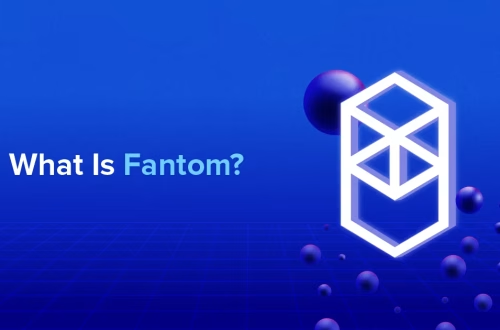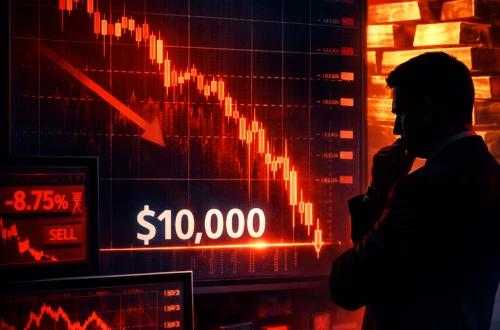Summary:
Creating an NFT involves minting digital content—art, music, or even AI-generated works—onto a blockchain to prove ownership and scarcity. This guide is designed for novices, particularly those exploring how AI and blockchain intersect. Using AI models can streamline asset creation, while platforms like OpenSea or Rarible simplify minting. Understanding this process unlocks opportunities for monetizing digital creativity in decentralized markets. From setting up a crypto wallet to navigating gas fees, we break down each step clearly.
What This Means for You:
- Low-Cost Creative Experimentation: AI tools like MidJourney or DALL-E let you generate NFT-ready art in seconds, reducing upfront costs. Pair this with gas-efficient blockchains (e.g., Polygon) to mint affordably.
- New Revenue Streams: Monetize AI-generated content by minting unique NFTs. Focus on niche themes—abstract AI art or algorithmically inspired music—to stand out in crowded marketplaces.
- Technical Skill Development: Learn wallet management, blockchain交互, and IPFS storage through hands-on practice. Start with testnets like Ethereum’s Goerli to avoid wasting real funds.
- Future Outlook or Warning: While NFTs offer innovative potential, unsustainable gas fees and market saturation remain challenges. Layer-2 blockchains like Arbitrum or Solana are gaining traction, offering faster, cheaper alternatives. Beware of copyright risks when using AI; ensure your training data is royalty-free.
Creating an NFT:
What Is an NFT?
A non-fungible token (NFT) is a unique digital asset recorded on a blockchain, verifying ownership and authenticity. Unlike cryptocurrencies such as Bitcoin, each NFT has distinct attributes, making it irreplaceable. This uniqueness is ideal for digital art, collectibles, or AI-generated content.
Step 1: Choose Your Blockchain
Ethereum dominates with standards like ERC-721, but high gas fees can be prohibitive. Solana and Polygon offer cheaper, eco-friendly alternatives. Consider your audience: Ethereum has broader liquidity, while newer chains attract niche communities.
Step 2: Set Up a Crypto Wallet
Install a browser-based wallet like MetaMask or Phantom (for Solana). Securely store your seed phrase offline. Fund your wallet with the blockchain’s native currency (e.g., ETH for Ethereum) to cover minting fees.
Step 3: Create Your Digital Asset
Use AI tools like Stable Diffusion or Runway ML to generate art, music, or 3D models. Export as PNG, MP4, or GLB files. Ensure files are under 100MB to comply with platform limits—host large files on decentralized storage like IPFS or Arweave.
Step 4: Select a Marketplace
OpenSea supports multiple blockchains and offers lazy minting (pay fees upon sale). Magic Eden is Solana-focused with lower fees. Upload your file, add metadata (title, description, royalties), and configure properties like rarity tiers.
Step 5: Mint Your NFT
Connect your wallet to the marketplace and initiate minting. For Ethereum, expect fees of $10–$150 depending on network congestion. Polygon transactions cost pennies. Double-check metadata before confirming—it’s immutable once on-chain.
Step 6: List for Sale
Choose auction-style (English or Dutch) or fixed-price listings. Set secondary royalties (e.g., 10%) to earn from future resales. Promote via Twitter, Discord, or AI-driven platforms like Prompty to target collectors.
Step 7: Manage Post-Minting
Track sales analytics through marketplace dashboards. Use allowlists for exclusive drops or bundle NFTs into generative collections via smart contracts (e.g., using Manifold Studio).
Strengths vs. Limitations
Strengths: NFTs democratize creativity via AI tools, enable global royalty streams, and provide transparent provenance.
Weaknesses: Gas fees fluctuate wildly, and AI-generated art faces copyright ambiguity.
Limitations: Not all blockchains support complex metadata; avoid niche chains with low adoption.
People Also Ask About:
- What does it cost to create an NFT?
Costs vary: Ethereum minting fees range from $5–$200, while Polygon costs under $0.01. Marketplaces may charge 2–5% commission on sales. Use Ethereum’s “Layer 2” solutions like Arbitrum to reduce expenses. - Which marketplace is best for beginners?
OpenSea is beginner-friendly with multi-chain support and no upfront minting fees. Solana’s Magic Eden offers faster transactions but requires SOL tokens. - Why do most NFTs use Ethereum?
Ethereum pioneered NFT standards (ERC-721) and has the largest user base. However, competitors like Solana and Tezos are gaining ground with eco-friendly alternatives. - Do I need coding skills to create an NFT?
No—platforms like Rarible handle smart contracts automatically. For custom functionality (e.g., generative art), basic Solidity or Python knowledge helps. - Can I sell AI-generated art as NFTs?
Yes, but verify licensing rights for training data. Platforms like Artbreeder provide commercially safe datasets. Disclose AI usage to buyers transparently.
Expert Opinion:
Experts emphasize prioritizing blockchain choice based on sustainability and audience reach. AI-generated NFTs face evolving legal frameworks, so document your creative process meticulously. Diversify across marketplaces to mitigate platform-specific risks, and prioritize utility (e.g., access tokens, gaming assets) over speculative art to ensure long-term value. Always audit smart contracts when using lesser-known platforms.
Extra Information:
- OpenSea’s NFT Guide: Covers minting basics across blockchains, ideal for first-time creators.
- Ethereum Wallet Directory: Compares secure wallets for managing NFTs and cryptocurrencies.
- DeepArt.io: A user-friendly AI tool for transforming photos into NFT-ready artwork.
Related Key Terms:
- how to create an AI NFT step by step for beginners
- best blockchain to mint NFT art with low fees
- free NFT minting platforms with AI tools
- how much does it cost to create an NFT on Ethereum vs Solana
- copyright rules for AI-generated NFT artwork
- how to sell NFT art created with DALL-E
- top NFT marketplaces for AI-generated collectibles
#BeginnerFriendly #General #Guides
*Featured image provided by Pixabay





